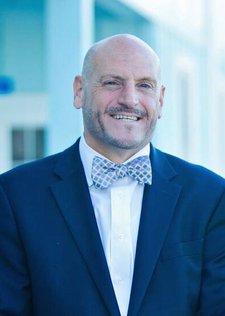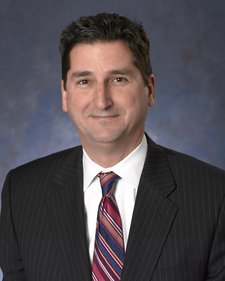By Holly Burns
Oct. 31, 2022
The transition to fall is scattered with seasonal markers: The occasional chill in the air; the wearing of the flannel shirt to the pumpkin patch; the urge to make soup.
These changes so far have happened like clockwork, and next comes the one that actually involves clocks. On Sunday Nov. 6, people in the United States and Canada will “fall back” to standard time, setting their clocks back an hour and signaling the end of daylight saving time. (Arizona and Hawaii, which are on permanent standard time, keep their clocks the same.)

Illustration: Linda Merad
Most Americans dislike this twice-yearly time reset, according to various polls, and it may soon end. Earlier this year, the Senate passed legislation to make daylight saving time permanent, perhaps as early as next year.
For now, most of us will be making the switch. And while many scientists maintain that standard time is better aligned with human circadian biology, even a modest time adjustment can take some getting used to — particularly when it means shorter, darker days.
The extra hour of afternoon darkness can be especially hard for people who are “vulnerable to feeling down in the autumn and winter — which is an awful lot of people,” said Norman E. Rosenthal, a clinical professor of psychiatry at the Georgetown University School of Medicine who coined the term “seasonal affective disorder.” “They may be low-energy, lethargic, prone to overeating and just out of sorts for a while.”
Here’s how to prepare for the change, and the darker season to come.
EMBRACE THE EXTRA HOUR OF SLEEP.
Many people — if they’re not working the night shift or parenting a small child — will get an extra hour of sleep on the morning after the clocks change. And that’s “going to enable them to function better,” said Elizabeth B. Klerman, a professor of neurology at Massachusetts General Hospital and Harvard Medical School. More than a third of Americans are sleep-deprived, which can have detrimental effects on mood, memory and health.
If you can’t sleep the extra hour — or you just want a smoother transition — try shifting your bedtime 30 minutes later a few days in advance, so that by Sunday, the time on the clock is closer to the time your body feels it is, said Jennifer Martin, a professor of medicine at the University of California, Los Angeles, and president of the board of directors for the American Academy of Sleep Medicine. That means, though, that you should also be sleeping 30 minutes later in the mornings, which isn’t feasible for everyone. (For what it’s worth, you can try this with your kids, too.)
Extra time in bed sounds glorious to some, but it can be hard if you struggle with insomnia, said Dr. Martin, because “the night basically just got an hour longer.” In that case, focus on keeping the time you spend in bed the same, rather than the time you fall asleep. So if you usually spend eight hours in bed — say, between 10:30 p.m. and 6:30 a.m. — go to bed an hour later on Saturday night, which may reduce your chances of lying awake during the night.
MOVE YOUR WORKOUT.
It can be demoralizing to find that the pleasant afternoon stroll you’ve been accustomed to is now a gloomy trudge through the dark. Shifting your walk, run or bike ride to the morning means you’ll get a dose of direct morning light, which is important for regulating sleeping and waking habits. Your cortisol spikes, giving you energy, and your brain stops producing the sleep hormone melatonin.
“Morning light is how your body clock resets itself to the outside world,” Dr. Klerman explained.
Of course, exercising first thing in the morning may be chillier. One trick is to do a quick warm-up inside with an extra layer over your workout clothes, then remove it right before you leave the house, said Thom Manning, a coach with fitness app Future. “That creates a pocket of insulation between your body and your first layer that’ll keep you warmer once you’re outside.”
If a morning workout feels particularly daunting on a dreary day, Jennifer Jacobs recommends psyching yourself up with something she calls “the morning bounce.”
“Put on a song — anything that makes you want to move — and lightly bounce on the balls of your feet for the whole thing,” said Ms. Jacobs, a Miami-based personal trainer and the founder of fitness program Job 1. “You can be barefoot, you can be in your pajamas. Just start the day with some movement and see how you feel from there.”
If you can’t swing a morning workout, think about “embracing the evening darkness and doing things outside that might give you a new perspective on your environment,” said Katie Hill, a psychiatrist and chief medical officer at wellness company Nudj Health. If the climate allows, and you have somewhere safe to do it, that could mean shooting hoops with a light-up basketball or “bundling up and going on a night hike when there’s a full moon.”
But since you may be hitting the hay a little earlier for the first few days after the clocks change, don’t leave it too late to work out. “Exercising close to bedtime can make it really hard to fall asleep,” said Dr. Martin.
EAT WITH CARE.
Aim to stick to your normal mealtimes once the clocks change — so if you were eating dinner at 6:30 p.m., keep eating at 6:30 p.m., said Hayley Wilkes, an integrative nutritionist in Chicago who works with clients to navigate potential disruptions to their eating habits. Prepare the week before by gradually shifting mealtimes forward 15 minutes, so your body gets used to eating a little later.
Shifting into shorter, darker days can impact the way we eat, Ms. Wilkes said. “Some people will find themselves a little sleepier in the afternoons, a little snackier.”
If you’re suddenly hungry at an odd time, choose a snack that is high in protein or fat and pair it with a complex carbohydrate containing fiber, which is digested slowly and won’t prompt a blood sugar spike. An apple with nut butter or cheese with whole-grain crackers are good choices, Ms. Wilkes said.
Lastly, watch your caffeine and alcohol consumption in the days after the time change. It’s no secret that both can worsen sleep quality, so “if you’re having trouble adjusting, it’s a good time to be extra careful,” Dr. Martin said.
SEEK CREATIVE ACTIVITIES.
In the days after we put the clocks back, it’s natural to feel sad that summer is over or frustrated that some activities aren’t an option anymore, Dr. Hill said. A Danish study of more than 185,000 people over 17 years found that the transition to standard time was associated with an 11 percent increase in depressive episodes.
As it gets colder and darker, it may be tempting to indulge in nothing more mentally taxing than a Netflix binge, but sedentary behavior and media consumption is strongly associated with decreased life satisfaction and increased depression, said Dr. Hill. Instead, try to focus on “activities where you create rather than consume.”
That might look like staging a family puppet show (something she did with her own children last week) or signing up for an art or cooking class.
It can also be useful, she said, to “think about the positives that you can add to your life, rather than just focusing on what you’ve lost as the summer leaves. Winter can be a wonderful time for restoring ourselves, exploring new hobbies and experiences and emerging in the spring more interesting, healthy and satisfied.”
c.2024 The New York Times Company








